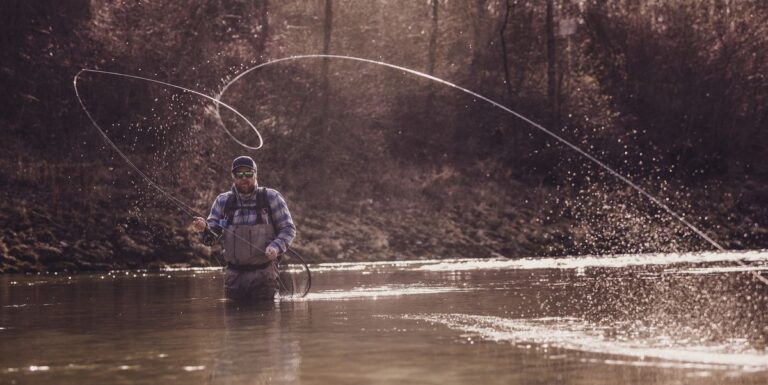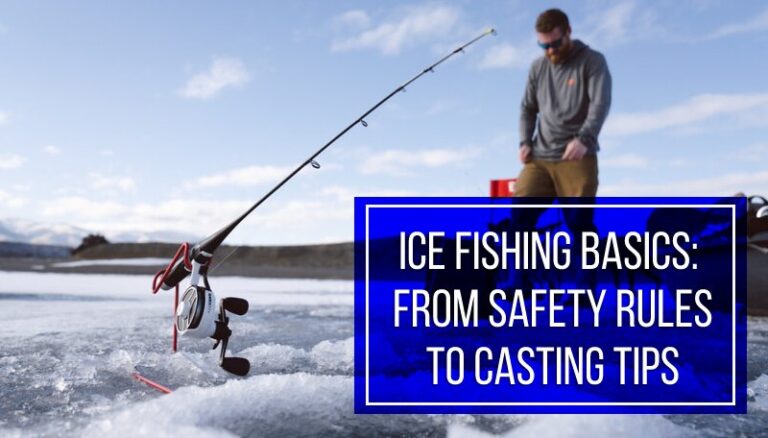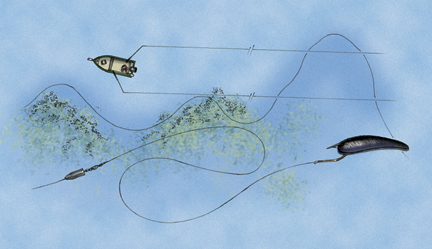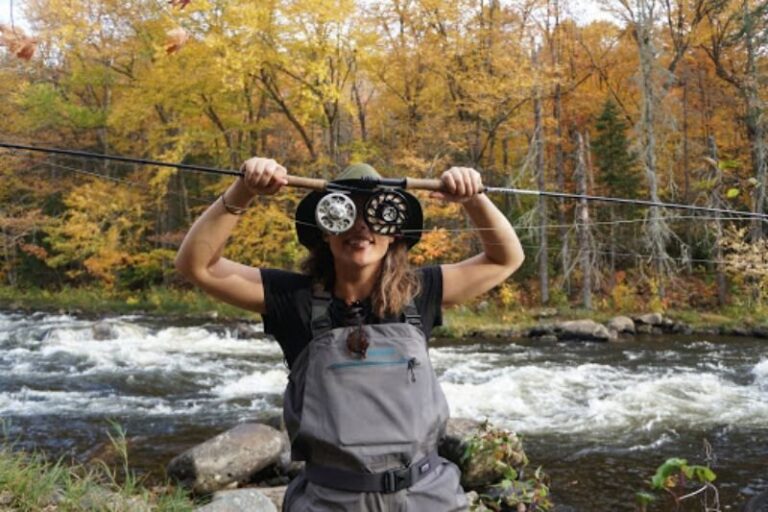The best baits for flats fishing include live shrimp, small crabs, and cut baitfish. These baits are known to attract a variety of fish species found in shallow, sandy areas, making them highly effective options for flats fishing enthusiasts.
Flats fishing, also known as shallow water fishing, is a popular angling technique that involves targeting fish in shallow, clear waters such as saltwater flats, lagoons, and estuaries. This type of fishing requires using baits that mimic the natural prey of the fish, enticing them to strike.
Live shrimp are a top choice as they are readily available, versatile, and attractive to many species like redfish, snook, and trout. Small crabs are also effective, especially for species like permit and bonefish. Cut baitfish, such as mullet or pilchards, can be used to attract larger predatory species like tarpon and barracuda. Using the right baits is crucial for success in flats fishing, as it allows anglers to capitalize on the natural feeding habits of the fish they are targeting. By presenting baits that closely resemble the fish’s favorite prey items, anglers greatly increase their chances of getting a bite. So, when heading out for flats fishing, be sure to have live shrimp, small crabs, and cut baitfish in your tackle box for the best chance at a successful day on the water.

Credit: www.saltwatersportsman.com
Understanding The Flats Fishing Environment
The flats are a unique and fascinating ecosystem that attracts anglers from all around the world. As a flats fisherman, it is crucial to have a good understanding of the environment you’ll be fishing in. This knowledge will help you choose the best baits for your fishing expedition and increase your chances of landing that trophy catch.
Here, we will delve into the key aspects of the flats fishing environment, including what are flats, the importance of understanding the flats ecosystem, how water temperature affects bait selection, and the factors that influence bait availability in the flats.
What Are Flats?
- Flats are shallow, expansive areas of coastal or inshore waters, usually characterized by sandy or muddy bottoms.
- They can be found in various locations, including estuaries, bays, lagoons, and even nearshore areas.
- Flats typically have a depth range of just a few inches to a few feet, making them ideal habitats for various fish species.
The Importance Of Understanding The Flats Ecosystem
- By understanding the flats ecosystem, you gain valuable insights into the behavior and patterns of the fish that inhabit these areas.
- Knowing the flats ecosystem allows you to predict where fish may be hiding, feeding, or spawning, increasing your chances of a productive fishing trip.
- It also helps you to identify potential hazards, such as oyster bars, coral reefs, or submerged structures, which can affect your approach and bait selection.
How Water Temperature Affects Bait Selection
- Water temperature plays a crucial role in determining the types of bait that fish are likely to be feeding on in the flats.
- Warmer water temperatures often result in increased baitfish activity, attracting predator species.
- In cooler water, baitfish tend to be less active, and fish may be more inclined to feed on crustaceans or other bottom-dwelling prey.
Factors That Influence Bait Availability In The Flats
- Tidal movements: Flats fishing is heavily influenced by tides. Rising and falling tides bring in nutrients and baitfish, attracting predator species to the flats.
- Seasonal changes: Different seasons can affect the availability of bait in the flats. For example, during the spawning season, certain baitfish species may become more abundant.
- Weather conditions: Fluctuations in wind, temperature, and barometric pressure can impact baitfish behavior and availability.
- Water clarity: Clear water allows fish to spot their prey more easily, while murky water may require scented baits that emit strong vibrations to attract fish.
Understanding the flats fishing environment is the key to becoming a successful flats angler. By having a good grasp of what flats are, the importance of the flats ecosystem, the impact of water temperature on bait selection, and the factors that influence bait availability, you’ll be well-prepared to choose the best baits for your next flats fishing adventure.
So, grab your rods, stock up on the right bait, and get ready to reel in some exciting catches on the flats!
Top Natural Baits For Flats Fishing
Shrimp: The Versatile Bait With Universal Appeal
—————————————————–
Shrimp is a go-to natural bait for flats fishing, and for good reason. It has universal appeal to a variety of species, making it a versatile option for anglers. Here are some key points about using shrimp as bait:
- Shrimp is a natural bait that is readily available in most coastal areas, making it convenient and cost-effective for anglers.
- The scent and flavor of shrimp are irresistible to many predatory fish, making it an effective bait for attracting strikes.
- Shrimp can be rigged in a variety of ways, such as threaded onto a hook, used on a jighead, or suspended under a float, allowing anglers to experiment with different presentations.
- Shrimp can be used to target a wide range of species, including redfish, trout, flounder, snook, and tarpon, making it a versatile bait option for flats fishing.
Crabs: A Delectable Meal For Predatory Fish
——————————————–
Crabs are another natural bait that is highly effective for flats fishing. They are a delectable meal for predatory fish and can entice even the most wary of species. Here are some key points about using crabs as bait:
- Crabs are a natural food source for many fish species found in flats, including redfish, black drum, sheepshead, and snook.
- The movement of a crab can be very enticing to predatory fish, particularly when fished live or as part of a natural-looking crab pattern fly.
- Crabs can be rigged on a hook or used as a weighted bait to allow them to stay near the bottom, where many predators are often lurking.
- The smell and taste of crabs are appealing to many fish species, making them an effective bait option for flats fishing.
Pinfish: The Go-To Bait For Targeting Larger Species
—————————————————-
When targeting larger species in flats fishing, pinfish are often the go-to bait for many anglers. These small baitfish can entice big strikes and are a reliable choice for those targeting trophy fish. Here are some key points about using pinfish as bait:
- Pinfish are an abundant baitfish found in flats and are readily available for anglers to catch or purchase from bait shops.
- Their size and movement make them an enticing meal for larger predatory fish, such as snook, tarpon, and large redfish.
- Pinfish can be rigged on a hook or used as live bait to allow them to swim freely, attracting the attention of big fish.
- When using pinfish, it’s important to match the size of the baitfish to the target species, as larger fish may not be interested in smaller pinfish.
Mullet: A Popular Bait For Attracting Trophy Fish
———————————————–
Mullet are a popular natural bait for flats fishing, known for their ability to attract trophy fish. They are widely recognized as a premier bait option for anglers chasing big game. Here are some key points about using mullet as bait:
- Mullet are a common baitfish found in flats and are easily accessible for anglers.
- They emit a strong odor that can attract the attention of larger predatory fish, making them a reliable choice for targeting trophy fish.
- Mullet can be rigged in various ways, including live or dead bait, allowing anglers to adjust their presentation based on the target species and fishing conditions.
- When using mullet as bait, it’s important to consider their size and the size of the fish you are targeting, as larger mullet may be more appealing to big game fish.
Sardines: An Irresistible Bait For A Variety Of Species
——————————————————
Sardines are an irresistible bait option for flats fishing, as they appeal to a wide variety of fish species. Whether used live or dead, sardines can attract strikes from numerous predators. Here are some key points about using sardines as bait:
- Sardines are a small, oily baitfish that emit a strong scent and taste, making them highly appealing to many fish species.
- They can be used live or dead, allowing anglers to choose the best presentation for their target species and fishing conditions.
- Sardines can be rigged on a hook, fished on a jighead, or used as chunk bait to entice strikes from a wide range of fish.
- The versatility of sardines as bait makes them a reliable option for flats fishing, particularly when targeting species such as snook, tarpon, redfish, and cobia.
Remember, using a variety of natural baits can help increase your chances of success while flats fishing. Experiment with different options and techniques to find what works best for you in your desired fishing location.
Artificial Baits For Flats Fishing Success
Flats fishing is an exciting and rewarding activity, but choosing the right bait can make all the difference in your success. While live bait is often preferred by anglers, artificial baits can be just as effective, if not more so, in certain situations.
In this section, we’ll explore some of the best artificial baits for flats fishing and why they work so well.
Soft Plastic Lures: Mimicking Natural Prey With Realistic Action
- Soft plastic lures are a versatile option that can imitate a wide range of natural prey, such as shrimp, minnows, and crabs.
- These lures come in various shapes, sizes, and colors to closely resemble the real thing, giving them a convincing appearance.
- The soft plastic material allows for a lifelike action in the water, attracting predatory fish and enticing them to strike.
- Anglers can use techniques like twitching, jerking, or steady retrieves to imitate the movement of injured or fleeing prey.
Topwater Lures: Creating Excitement And Drawing Strikes
- Topwater lures are designed to create excitement on the water’s surface, mimicking the behavior of prey fish.
- These lures come in different styles, including poppers, walkers, and prop baits, each producing a unique sound and action.
- By imitating the movements of a struggling or fleeing baitfish, topwater lures can trigger aggressive strikes from predatory species.
- Anglers can experiment with various retrieves, including popping, spitting, or zigzagging, to entice fish lurking near the surface.
Jigs: An Effective Lure For Versatile Fishing Styles
- Jigs are a popular and versatile artificial bait that can be used in a variety of fishing styles, from casting to trolling.
- Consisting of a weighted head and a hook, jigs are often paired with soft plastic bodies or live bait to enhance their effectiveness.
- The jig’s weight allows for precise control and can be used to mimic the natural movement of prey fish.
- Anglers can fish jigs at various depths, bouncing them along the bottom or swimming them through the water column to entice strikes.
Spoons: Flashy And Versatile Baits For All Conditions
- Spoons are metal lures with a curved shape that imitates the look of a baitfish or injured prey.
- These lures are known for their flashy, reflective surfaces that can catch the attention of predatory fish in any water condition.
- Anglers can cast spoons far distances, allowing them to cover a larger area and reach fish that may be holding deeper.
- Spoons can be fished with a variety of techniques, including a steady retrieve, a jigging motion, or even a fluttering drop.
Jerkbaits: Controlled Movement To Entice Predatory Fish
- Jerkbaits are designed to imitate injured baitfish and can be highly effective for enticing predatory fish to strike.
- These lures have a realistic appearance with lifelike colors, patterns, and finishes that mimic the natural look of prey.
- Anglers can work jerkbaits by giving the rod quick, sharp jerks, causing the lure to dart erratically through the water.
- The unpredictable movement of jerkbaits can trigger a predatory instinct in fish, making them unable to resist striking.
With a wide variety of artificial baits to choose from, flats fishing can be an exhilarating experience for anglers. Investing in a selection of soft plastic lures, topwater lures, jigs, spoons, and jerkbaits will give you options for different conditions and fishing styles.
Experiment with different techniques and presentations to find what works best for you and the fish you’re targeting. Remember, when using artificial baits, it’s essential to mimic the natural movement and appearance of prey to increase your chances of success on the flats.
Conclusion: Choosing The Right Baits For Flats Fishing Success
Factors To Consider When Selecting Baits For Flats Fishing
When it comes to flats fishing, choosing the right bait can make all the difference in your success on the water. Consider the following factors when selecting baits for flats fishing:
- Water temperature: Pay attention to the water temperature as different species of fish have specific preferences. Cold-water species like snook and redfish tend to prefer live bait, while warmer-water species like tarpon and bonefish may be more inclined to bite on artificial lures.
- Water clarity: Clear, shallow waters call for smaller, more natural-looking baits, such as shrimp or small baitfish imitations. In murky or stained waters, go for larger, more conspicuous baits that create a lot of noise and vibration to attract fish.
- Time of year: The time of year can greatly impact bait preferences. During certain seasons, certain baitfish may be more abundant, and the fish in the area may be actively feeding on them. Matching your bait to what the fish are already targeting can greatly increase your chances of success.
- Fish behavior: In addition to considering the species you are targeting, it’s important to understand the behavior of the fish in that particular area. Some fish species are more aggressive and likely to strike at fast-moving, flashy lures, while others may be more cautious and prefer slow-moving, natural presentations.
The Importance Of Observing Local Bait Preferences And Trends
Every fishing location has its own unique bait preferences and trends. Observing and understanding these local preferences can significantly improve your chances of success. Here are some key points to keep in mind:
- Research and local knowledge: Before heading out to fish a new area, do some research on local bait preferences and trends. Online forums, fishing reports, and local bait shops can provide valuable insights into what has been working best in that particular region.
- Talk to local anglers: Engage in conversations with experienced anglers in the area. They can offer valuable advice on which baits have been successful recently and give you tips on how to effectively present those baits.
- Observe baitfish activity: Take the time to observe the baitfish activity in the area. Look for schools of baitfish and pay attention to how the fish are feeding on them. This information can help you determine which baits will closely resemble the natural prey and increase your chances of enticing a strike.
- Stay flexible: While it’s important to consider local preferences and trends, don’t be afraid to experiment with different baits and techniques. Fish behavior can change, and what worked yesterday may not work today. Stay adaptable and willing to try new approaches to maximize your chances of success.
Experimenting With Different Baits To Find What Works Best For You
Finding the best bait for flats fishing is often a process of trial and error. Each angler has their own preferences, and what works for one person may not work for another. Consider the following points when experimenting with different baits:
- Variety is key: Don’t limit yourself to just one type of bait. Experiment with live bait, artificial lures, and even different sizes and colors of the same bait. By trying a variety of options, you can quickly determine what the fish in your area respond to best.
- Keep records: Keep a fishing journal or log where you record the bait and technique used, as well as the results of each fishing trip. Over time, you’ll start to notice patterns and trends that can help you identify the most successful baits for specific conditions and species.
- Seek advice: Don’t hesitate to seek advice from fellow anglers or local bait shops. They may have valuable insights and recommendations based on their experience and the feedback they’ve received from other anglers.
- Stay open-minded: Be willing to try new baits and techniques, even if they may seem unconventional. Sometimes, the best baits are ones that are locally popular but not widely known. By being open-minded, you may discover a hidden gem that produces exceptional results.
Taking Into Account The Specific Species You Are Targeting
Different species of fish have their own unique preferences when it comes to bait selection. Understanding the specific species you are targeting is crucial for choosing the right baits. Consider the following points when targeting specific species:
- Research behavior and diet: Research the behavior and diet of the species you are targeting. Are they bottom feeders, topwater predators, or something in between? Knowing their preferred food sources can help you select the most effective baits.
- Match the hatch: Try to imitate the primary food sources of the species you are targeting. If they primarily feed on shrimp, using a shrimp imitation will increase your chances of success. On the other hand, if they prefer small baitfish, choose lures that mimic their appearance and action.
- Size and color: Consider the average size of the baitfish or prey in the area and choose baits that closely match in size. Additionally, take into account the water clarity and select colors that stand out or blend in, depending on the conditions. Experimenting with different sizes and colors can help you dial in the best combination.
- Adapt to the season: Some species change their feeding patterns and preferences throughout the year. In colder months, they may be more sluggish and opt for slower-moving baits, while in warmer months, they may be more aggressive and open to faster presentations. Adjusting your bait selection accordingly can lead to more success.
Remember, success in flats fishing is a combination of factors, including bait selection, presentation, and technique. By considering the factors discussed above and continuing to learn from your experiences on the water, you’ll increase your chances of consistently landing those prized flats fish.
Happy fishing!
Conclusion
To wrap up, selecting the right bait is essential for success in flats fishing. Whether you’re targeting bonefish, tarpon, or redfish, it’s important to consider the natural prey of these species and choose bait that mimics their favorite snacks. Shrimp, crab, and small fish are all popular choices that have proven effective in attracting bites.
Additionally, using live bait can enhance your chances of hooking a trophy catch. Remember to vary your presentation and experiment with different techniques, such as jigging or dragging the bait along the bottom, to increase your chances of success. Don’t forget to consider the conditions, such as water clarity and current, when choosing your bait.
By following these guidelines and using the best baits for flats fishing, you’ll be well on your way to reeling in the fish of a lifetime. Happy fishing!






